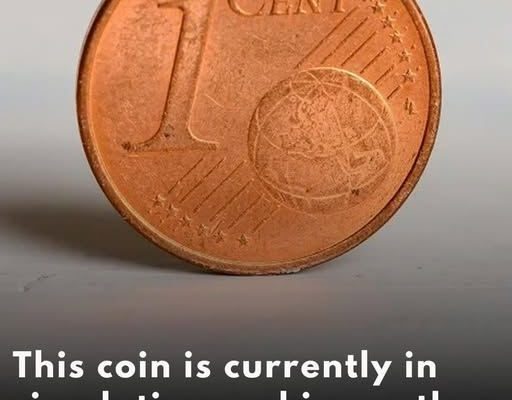They say money doesn’t grow on trees… but what if your next big payday is already hiding in your house, tucked between two dusty red coins? That ordinary-looking penny in your drawer might actually be worth a small fortune. What if you already owned one—and didn’t even know it? Here’s why this tiny U.S. coin is stirring up excitement among coin collectors.
Why could a penny be worth a fortune?

When you picture a penny, you probably don’t think of treasure. But believe it or not, some Lincoln pennies—yes, the tiny copper ones—are now valued at a staggering 115 million euros. That’s right. No joke. It’s not an urban legend.
So what’s behind that jaw-dropping price tag? It all comes down to rarity. Thanks to minting mistakes, limited production runs, unusual metals, and specific historical contexts, certain pennies have become legendary in the world of numismatics.
Minting mistakes: When flaws turn to gold
Think of a coin that doesn’t follow the standard design. Maybe it has a doubled image, a missing letter, or a smudged date. Far from being worthless, these imperfections can make a coin more valuable. Just take the famous 1955 penny with its noticeable “double die” error—collectors go wild for it.
And here’s another twist: back in 1943, during World War II, pennies were supposed to be made from steel to save copper for the war effort. But a few were accidentally minted in copper anyway. Today, those rare 1943 copper pennies are incredibly valuable. And here’s a quick test: use a magnet. If your 1943 penny doesn’t stick, you might be holding something very special.
Dates and mint marks that matter

If you spot a penny lying around, don’t just glance at it—turn it over and check every tiny detail. Most importantly, look at the year it was minted and the small letter below the date. That little letter tells you where it was made. Some specific years and mint marks can make a huge difference. For example, 1909-S, 1914-D, and 1955 pennies are extremely sought after. And if you notice an “S” for San Francisco or a “D” for Denver—bingo! Those mint marks could mean your coin is far more valuable than you thought.
Finding a rare penny is already a lucky break. But what should you do next? Rule number one: don’t clean it! Even a bit of tarnish or oxidation might add to its value. Trying to polish it could seriously hurt its worth.
The smartest move? Get it professionally appraised. A trusted numismatist or an auction house can verify its authenticity and give you a clear estimate of what it’s worth. After that, it’s your choice: hold onto it as a long-term investment… or cash in and enjoy the payday.
Hidden treasure in your pocket?
Most of us have a jar or drawer full of forgotten change. But what if that “small change” is actually worth thousands—or even millions? All it takes is a curious eye and a closer look. With a little luck, you might just stumble upon a hidden gem.
